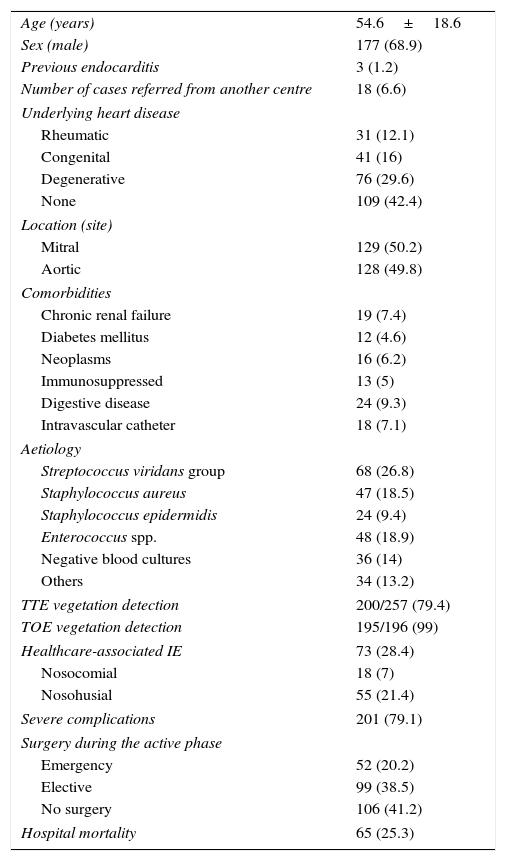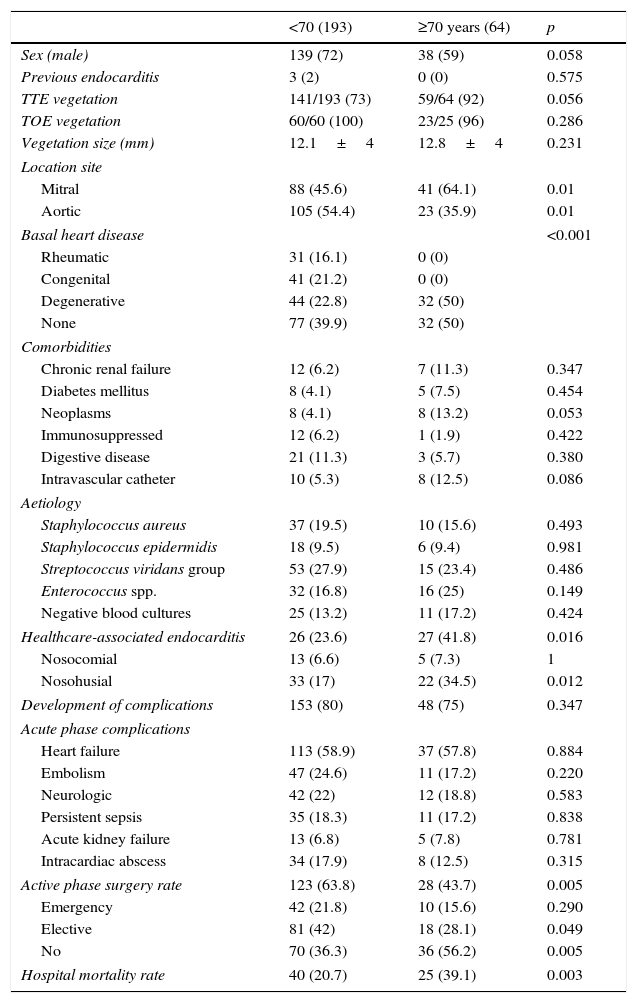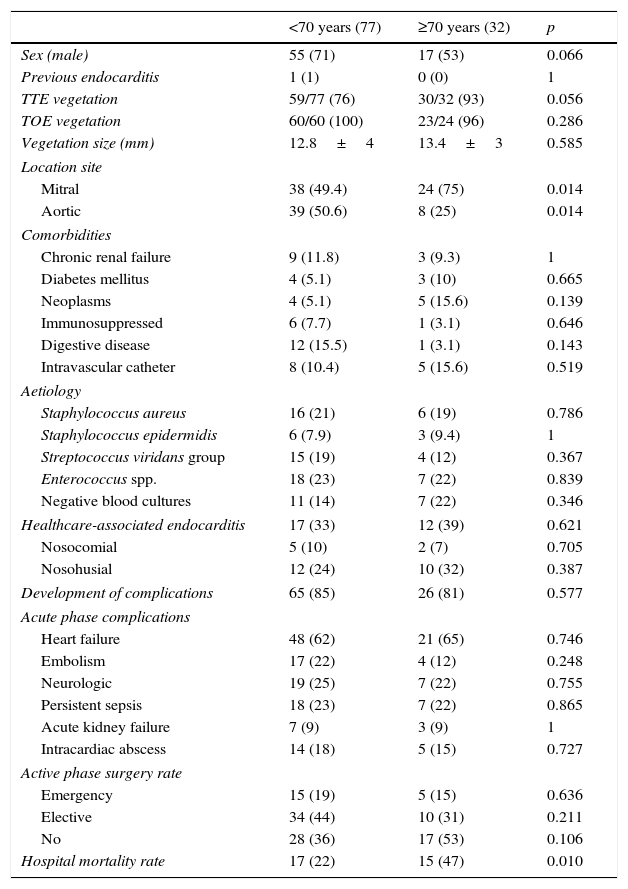Left-sided native valve infective endocarditis (LNVIE) epidemiology has been modified as a result of the increase in average age. The aim of our study is to analyse the influence of age and the presence of predisposing heart disease in the prognosis of these patients.
MethodsWe analysed a series of 257 cases of LNVIE depending on their age (greater than or equal to 70 years old), both in the overall series and in the subgroup of patients without predisposing heart disease.
ResultsMean age was 54.6 (18.6) years. There was an increase in the percentage of cases of older patients between 1987–2000 and 2001–2014 (9.8 vs. 34.8%, p<0.001). These patients present higher prevalence of degenerative valves (50 vs. 22.8%) or not predisposing heart disease (50 vs. 39.9%), p<0.001, health-care associated episodes (41.8 vs. 23.6%, p=0.016), lower rate of surgery (43.7 vs. 63.8%, p=0.005) and higher in-hospital mortality (39.1 vs. 20.7%, p=0.003), with no differences in comorbidities. Older patients who did not have predisposing heart disease also suffered higher in-hospital mortality (47 vs. 22%, p=0.01). Age greater than or equal to 70 years old is an independent predictor of mortality in patients with LNVIE (OR 2.53, 95% CI 1.24–5.15, p=0.011), as in those without previous heart disease (OR 3.98, 95% CI 1.49–10.62, p=0.006).
ConclusionsPatients of age greater than or equal to 70 years old and who suffer an LNVIE are becoming more frequent and have a worse prognosis with a lower rate of surgery and higher rates of in-hospital mortality.
La epidemiología de la endocarditis infecciosa sobre válvula nativa izquierda (EIVNI) se ha modificado, consecuencia del aumento en la edad media de los pacientes. El objetivo de nuestro estudio es analizar la influencia de la edad y la presencia de una cardiopatía predisponente previa en el pronóstico de estos pacientes.
MétodosAnalizamos 257 casos consecutivos de EIVNI en función de su edad, tanto en la serie global como en el subgrupo de pacientes sin cardiopatía predisponente.
ResultadosLa edad media fue de 54,6 (18,6) años. Existió un aumento en la proporción de pacientes de edad igual o mayor a 70 años entre 1987–2000 y 2001–2014 (9,8 frente a 34,8%, p<0,001), que presentaban una mayor prevalencia de valvulopatía degenerativa (50 frente a 22,8%), ausencia de cardiopatía (50 frente a 39,9%), p<0,001, casos relacionados con atención sanitaria (41,8 frente a 23,6%, p=0,016), menor tasa de cirugía (43,7 frente a 63,8%, p=0,005) y mayor mortalidad hospitalaria (39,1 frente a 20,7%, p=0,003), sin diferencias respecto a comorbilidades. Los pacientes sin cardiopatía también presentaron una mortalidad hospitalaria más elevada (47 frente a 22%, p=0,01). La edad igual o mayor a 70 años constituye un predictor independiente de mortalidad en pacientes con EIVNI (OR 2,53, IC 95% 1,24–5,15, p=0,011), igual que en aquellos que no presentan cardiopatía (OR 3,98, IC 95% 1,49–10,62, p=0,006).
ConclusionesLos pacientes que tienen una edad igual o mayor a 70 años con un episodio de EIVNI son cada vez más frecuentes y presentan peor pronóstico, con una tasa menor de cirugía y mayores tasas de mortalidad hospitalaria.












